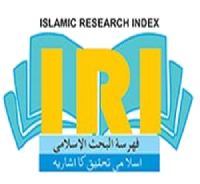امہاتِ کُتبِ دلائلِ نبوت کے اُردو تراجم: مبادیات فن ترجمہ کی روشنی میں جائزہ
Urdu Translations of Fundamental Books of Dalail-e-Nubuwwat: An Analysis in the Light of the Basics of Translation Studies
Keywords:
Art of Sirah Writing, Art of Translation, Dalail-e-Nabuwwah, Urdu TranslationsAbstract
The Islamic Literature and Manuscripts have included the Holy Quran, Ahadith, Seerah, Islamic Jurisprudence, Islamic History and all allied arts associated with these exist in the Arabic language and to some extent in the Persian language. To understand and study it, translation of this Islamic literature in the native language i.e., Urdu is the dire need of time. There is a historical practice of translating the Holy Quran in Western and Eastern languages, Muslim Scholars contributed remarkable work to establish the rules and regulations for its translation. The tradition of Urdu translations of Islamic Fundamental Literature is also noteworthy. We found Translations of Seerah Literature and its various branches in a good number in the Urdu language now. Fundamental books on Dalail-e-Nubuwwat have also been translated into Urdu by various scholars. This research deals with an analytical study of the selected Urdu translations of fundamental books on Dalail-e-Nubuwwat. This study explores the different methods and styles of Urdu translations and their merits and demerits by focusing on the fundamentals of the Science of Translation Studies.
Downloads
Published
How to Cite
Issue
Section
License

This work is licensed under a Creative Commons Attribution 4.0 International License.
This work is licensed under a Creative Commons Attribution 4.0 International License.




